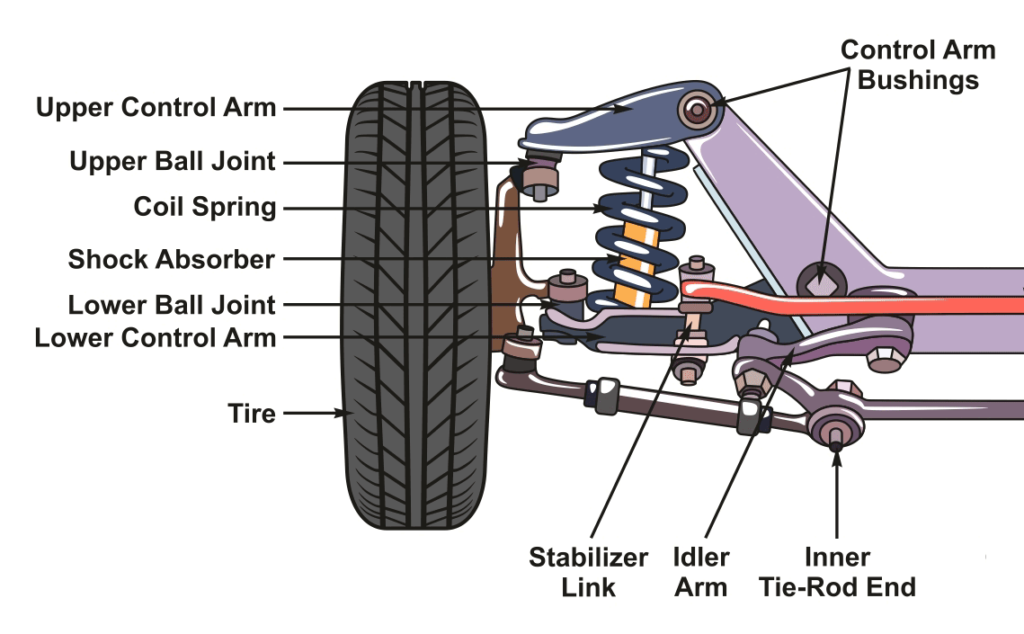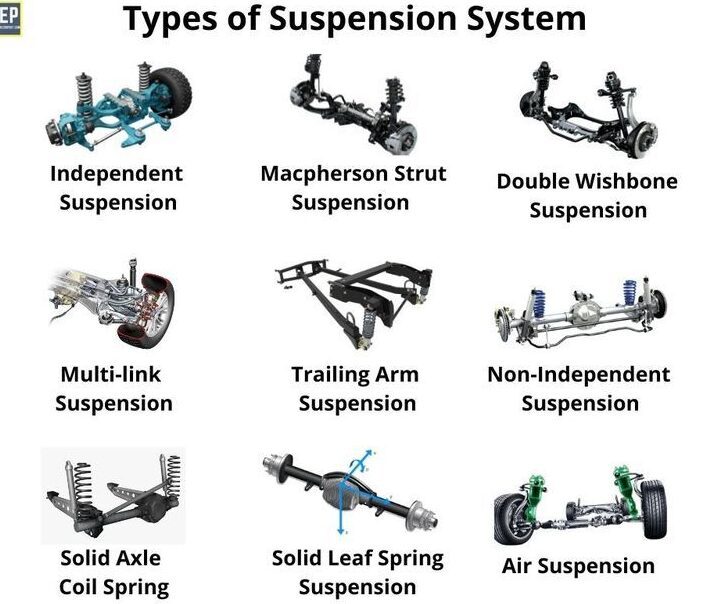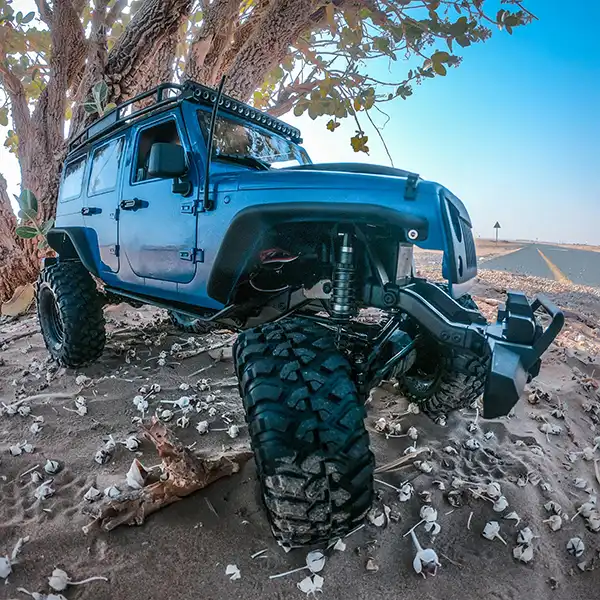Upgrading your car’s suspension system is one of the most impactful changes you can make to enhance your vehicle’s performance. Whether you’re aiming for a smoother daily drive or looking to dominate the racetrack, understanding the different types of suspension systems and their effects on performance is crucial. In this guide, I’ll walk you through the various options available and provide tips on choosing the best suspension system for your needs, based on my own experiences and knowledge.
Understanding Suspension Systems
Suspension systems are a critical component of your vehicle, playing a vital role in ride comfort, handling, and overall driving experience. They consist of various parts, including springs, shock absorbers (dampers), struts, and anti-roll bars, all working together to absorb impacts from the road and keep your tires in contact with the ground.

Types of Suspension Systems
- Coil Spring Suspension
- Description: The most common type of suspension found in modern vehicles. Coil springs are made of durable steel and are designed to compress and expand to absorb road shocks.
- Pros: Affordable, easy to install, and provides a comfortable ride.
- Cons: Limited adjustability and may not offer the best performance in extreme driving conditions.
- Leaf Spring Suspension
- Description: Typically found in older vehicles and trucks. Leaf springs are made of multiple layers of metal strips bound together.
- Pros: Durable, can handle heavy loads, and relatively inexpensive.
- Cons: Less comfortable and less responsive compared to modern systems.
- Torsion Bar Suspension
- Description: Uses a steel bar that twists to absorb shocks. Commonly found in trucks and SUVs.
- Pros: Adjustable ride height, durable, and space-efficient.
- Cons: Can be complex to install and adjust, and may not offer the smoothest ride.
- Air Suspension
- Description: Uses air springs (bladders) instead of traditional metal springs, allowing for adjustable ride height and stiffness.
- Pros: Provides a smooth ride, adjustable for different driving conditions, and can improve load handling.
- Cons: More expensive and complex, potential for air leaks and compressor issues.
- Hydraulic Suspension
- Description: Uses hydraulic fluid and cylinders to adjust ride height and stiffness.
- Pros: Highly adjustable and offers superior performance.
- Cons: Expensive, complex, and requires regular maintenance.

How Different Suspension Systems Affect Vehicle Performance
Ride Comfort
- Coil Spring Suspension: Offers a good balance between comfort and performance, making it ideal for daily driving.
- Air Suspension: Superior in terms of comfort, as it can adjust to provide a smooth ride over various terrains.
- Hydraulic Suspension: Also offers excellent ride comfort, but its complexity and cost may be a consideration.
Handling and Stability
- Leaf Spring Suspension: Provides good stability under heavy loads but may compromise handling due to its rigidity.
- Torsion Bar Suspension: Offers decent handling but may not be as responsive as other systems.
- Coil Spring Suspension: Generally provides good handling, especially when paired with quality shock absorbers.
- Air Suspension: Enhances handling with its adjustable stiffness, making it suitable for both comfort and performance driving.
- Hydraulic Suspension: Offers superior handling and stability, especially in performance and racing applications.
Load Handling
- Leaf Spring Suspension: Excellent for heavy loads, commonly used in trucks and commercial vehicles.
- Air Suspension: Also great for load handling due to its adjustable nature.
- Coil Spring Suspension: Adequate for moderate loads but may require additional support for heavy-duty applications.

Tips for Choosing the Right Suspension System
1. Identify Your Driving Needs
Before selecting a suspension system, it’s essential to determine your primary driving needs. Ask yourself the following questions:
- Do you primarily drive on smooth city roads or rough terrains?
- Are you looking for improved performance for racing or off-roading?
- Do you often carry heavy loads or tow trailers?
2. Consider Your Budget
Suspension upgrades can range from affordable to quite expensive. Determine your budget and find a balance between cost and performance. Remember, while some systems may have a higher upfront cost, they can offer better long-term value through improved performance and durability.
3. Research Compatibility
Not all suspension systems are compatible with every vehicle. Ensure that the system you choose is designed for your specific make and model. Consult with manufacturers or experienced mechanics if you have any doubts.
4. Quality Matters
Invest in high-quality parts from reputable brands. Quality components are more durable, offer better performance, and often come with warranties. Avoid cheap alternatives that may compromise your vehicle’s safety and performance.
5. DIY vs. Professional Installation
Some suspension upgrades can be installed at home with the right tools and knowledge. However, more complex systems like air or hydraulic suspensions may require professional installation. Consider your skill level and the complexity of the job before deciding to go DIY.

My Personal Experience with Suspension Upgrades
I’ve always been passionate about optimizing my vehicle’s performance. Over the years, I’ve experimented with various suspension systems to find the perfect balance for my driving needs. Here’s a bit about my journey:
The Coil Spring Upgrade
My first suspension upgrade was replacing the stock coil springs with high-performance coilovers. This change dramatically improved my car’s handling and cornering stability. The ride became a bit stiffer, but the trade-off for better performance was worth it. For anyone looking to enhance their vehicle’s handling without breaking the bank, I highly recommend considering performance coil springs.
Venturing into Air Suspension
Later, I decided to try air suspension. The ability to adjust ride height and stiffness on the fly was a game-changer. Whether I was cruising on the highway or navigating bumpy back roads, I could tailor the suspension to suit the conditions. Although the installation was more complex and the cost higher, the versatility and comfort were unparalleled.
The Ultimate Performance: Hydraulic Suspension
For my track car, I eventually installed a hydraulic suspension system. The precise control over ride height and stiffness provided unmatched performance. The car’s handling on the track was phenomenal, allowing for sharper turns and quicker response times. While this system is overkill for daily driving, it’s perfect for serious performance enthusiasts.

Conclusion
Choosing the right suspension system can transform your driving experience, whether you’re looking for improved comfort, better handling, or the ability to handle heavy loads. By understanding the different types of suspension systems and considering your driving needs, budget, and vehicle compatibility, you can make an informed decision that suits your specific requirements.
Upgrading your suspension system is a rewarding investment in your vehicle’s performance. Whether you decide to go with coil springs, air suspension, or even a high-end hydraulic system, the key is to choose quality parts and consider professional installation if needed. Happy driving!
For more tips and guidance on auto parts and performance upgrades, be sure to check out our other blog posts on eParts. If you have any questions or need personalized advice, feel free to reach out—we’re here to help you get the most out of your vehicle!


